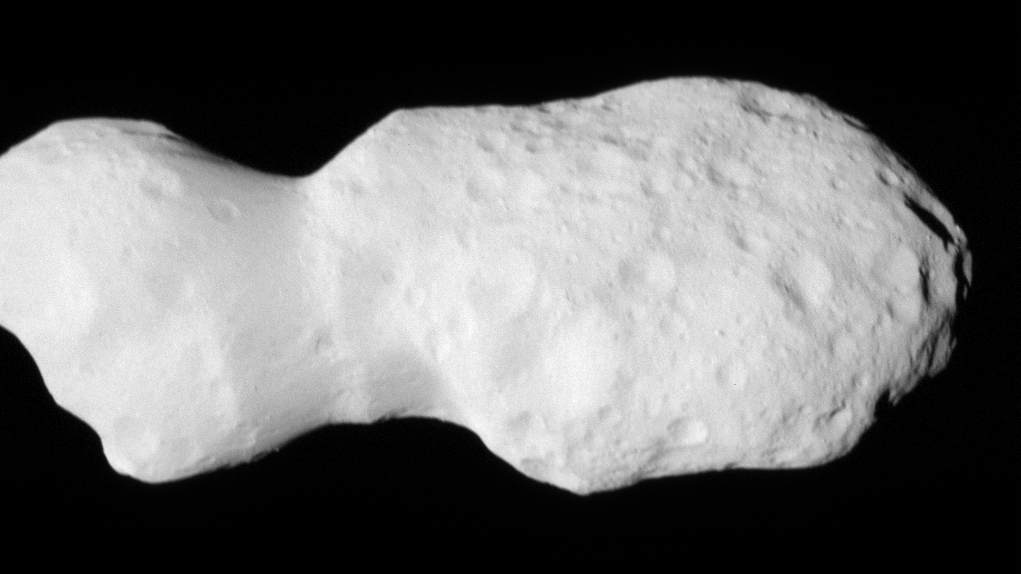Follow us on Google News (click on ☆)

Lucy's Long Range Reconnaissance Imager captured asteroid Donaldjohanson with unprecedented detail.
Credit: NASA/Goddard/SwRI/Johns Hopkins APL
Asteroid Donaldjohanson formed when two smaller objects collided. Its strange shape, with a narrowing in the middle and two lobes on either side, resembles a misshapen peanut. The images were taken from a distance of about 600 miles (960 km).
This close encounter provides scientists with a unique opportunity to study planet formation processes. Donaldjohanson's structures could reveal clues about the materials and collisions that shaped our Solar System. The Lucy mission, launched in 2021, aims to explore even older asteroids.
The Trojan asteroids, Lucy's primary targets, are considered remnants of the Solar System's primordial matter. Orbiting Jupiter, they may hold secrets about gas giant formation. Donaldjohanson, though younger, serves as a prelude to these investigations.
Measuring an estimated 5 miles (8 km) long, Donaldjohanson is much smaller than the Trojans Lucy will study. For example, Eurybates, the first targeted Trojan, is about 40 miles (64 km) wide. This size difference illustrates the diversity of objects in the main belt and beyond.
The asteroid's name honors Donald Johanson, discoverer of the 'Lucy' fossil. Just as that fossil illuminated human evolution, the Lucy mission aspires to enhance our understanding of planetary origins. Current images show only part of the asteroid, but upcoming data will reveal more.
Before encountering Donaldjohanson, Lucy tested its instruments on asteroid Dinkinesh in 2023. This latest approach is described as a dress rehearsal before meeting the Trojans. Scientists eagerly anticipate discoveries Lucy might make among these ancient Solar System remnants.
How do asteroids like Donaldjohanson form?
Bizarrely shaped asteroids like Donaldjohanson often result from collisions between two smaller bodies. These impacts can merge the objects, creating irregular shapes with lobes and hollows.
Asteroid composition varies depending on their formation location in the Solar System. Main belt asteroids like Donaldjohanson are typically rich in silicates and metals, witnesses to conditions present during planet formation.
Studying these bodies helps trace the history of collisions and aggregations that led to planet formation. Asteroids are thus valuable geological archives for understanding the Solar System's early days.
Why are Trojan asteroids so important to science?
Trojan asteroids share Jupiter's orbit, trapped in gravitationally stable points. They're considered relics of the primitive solar nebula, having escaped planetary formation processes.
Their composition could reveal the nature of materials available during gas giant formation. Unlike main belt asteroids, Trojans have been little altered by collisions, preserving their original state.
By studying these objects, Lucy might provide clues about matter distribution in the young Solar System. This data is crucial for validating or refining planetary formation models.